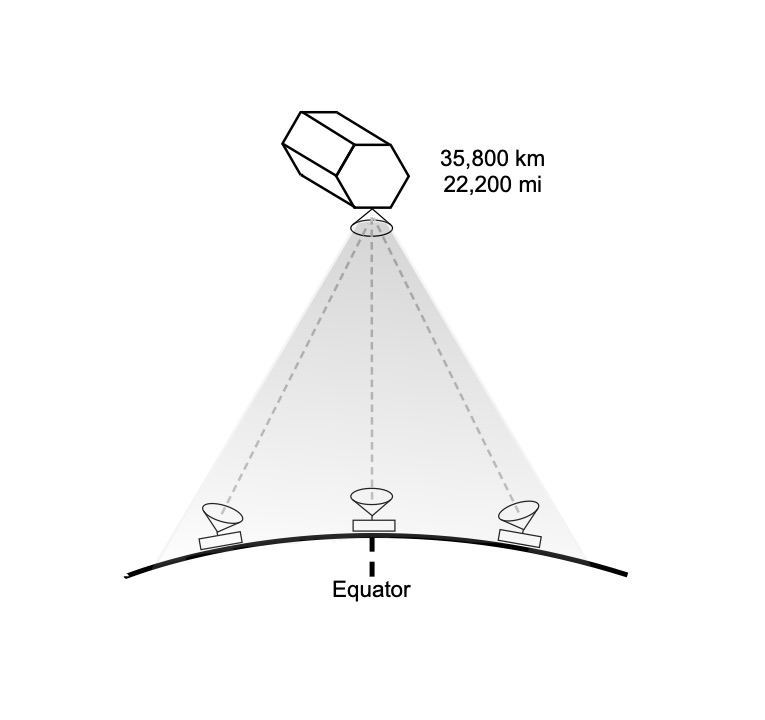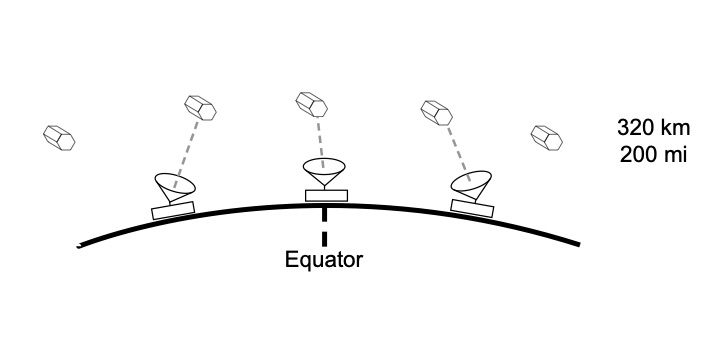Satellite Communications
Satellite connections are more complicated,
especially for the Internet. And, of
course, like anything based on launching stuff into space, satellites
are expensive.
There are two types of satellites,
geostationary satellites and low Earth orbit (LEO) satellites.
Geostationary satellites are very large satellites placed in orbit at
22,000 miles (36,000 km) above the equator. At this altitude they
maintain position above a single point on the Earth because their orbit
period is the same as the rotation of the Earth. They can communicate
continuously with devices within the coverage of the satellite’s
antennas. Because these satellites are large, they can support many users at reasonable Internet connection speeds.
The
first geostationary satellites were used for telephone conversations
between continents instead of using undersea cables. The downside of
synchronous satellites is the latency. It takes about 240 milliseconds
for the signal to get from Earth to the satellite and return, which made
voice conversations with the delay annoying. That delay also makes the
latency extremely high in Internet terms.

Geostationary
satellites have a network of earth stations (connected on fiber optics,
of course) that provide uplinks and downlinks to the Internet for the
devices connected to the satellite. Users must have their own antenna
and electronics for their uplink/downlink to the satellite.
Low Earth Orbit (LEO) satellites are very small satellites that orbit
at around 200 miles (320km) above the earth and zoom over an Earth
station at high speeds. These small satellites have limited bandwidth so
they can only support small numbers of users. Because the satellites
pass overhead quickly,
the earth stations must track them continuously. The user must be passed
off from satellite to satellite continuously to provide constant
Internet service.

These satellites require a complicated Earth-based communications
network involving many ground stations (connected on fiber of course) to
connect to the satellites and they sometimes even use satellite to
satellite links (using lasers in space in one proposal) to connect to
the Internet. Users must have their own antenna and electronics for
their uplink/downlink to the satellite, but it is more complicated than with
geostationary satellites because it must track fast moving satellites
and jump from satellite to satellite as they pass overhead.
This method requires thousands of satellites to provide useful coverage.
The lifetime of low earth orbit satellites is also generally not long
due to atmospheric drag.
More on the
applications of fiber optics.
